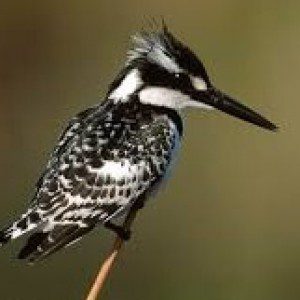 A few years ago I took a bicycle, boat, and birding trip up the Mekong River through Vietnam and Cambodia, poor countries with very wet and tropical environments inhabited by friendly people. The per capita income is about $1000 per year, and young children are evident everywhere.
A few years ago I took a bicycle, boat, and birding trip up the Mekong River through Vietnam and Cambodia, poor countries with very wet and tropical environments inhabited by friendly people. The per capita income is about $1000 per year, and young children are evident everywhere.
Vietnam is a crowded country with a population of 86 million. Reflecting that are river banks and adjacent roads with mostly wall to wall makeshift and ramshackle housing. Numerous fishermen ply the river with boats and line the banks with cast nets and traps as dried fish and fish sauce (nuoc mam) are major ingredients of the Vietnamese diet. The Mekong is overfished. Fish the size of your thumb and smaller are caught, fried, and eaten like potato chips. The tropical forest is almost totally devoid of large trees so wood for boat building is imported from Cambodia.
Many people survive by subsisting on what they can find in the wild or barter for. This includes eating wild birds, perhaps explaining why I saw a surprisingly small variety and number of birds in Vietnam. Hours would go by as we went up the river before I saw more than a handful of birds. There were no waterfowl at all, but Chinese Herons were abundant, probably because they subsisted on the fish farms of the area. In addition, the Mekong is very silt-laden, making the river a serious challenge for aquatic birds.
When we entered Cambodia the comparison to Vietnam was striking. A smaller country with a far less dense population of 14 million, the housing was just as primitive, but scattered across the countryside and the fishing pressure was less intense. But the forests are also disappearing there – a 70% reduction in large trees in the past 30 years. There were more birds, however, although the Cambodians also eat them. Little Cormorants, Pied Kingfishers, River and Whiskered Terns could be seen along the river and in the forest I spotted birds such as the Pied Fantail, Black-naped Oriole, Black and Ashy Drongos, and Red Junglefowl (the ancestor of our domestic chicken.) Wandering off the beaten path in search of birds for my life list had to be done cautiously as Cambodia still has two to three million undiscovered land mines.
In downtown Phnom Penh we saw vendors with cages of swallows or finches which tourists could release for 50 cents each (only to be caught again later, I am sure). Tourism is an important source of revenue for Vietnam and Cambodia, with the natural environment, historic monuments, and interesting cultures all major attractions. I have been toover 90 countries, not just for birding, but for all the breadth of knowledge travel affords. Seeing sites like Angkor Wat up close is a rare and special treat. All this travel has convinced me of two things : one, ecotourism, of which birding is a large part, can bolster the economy of a country while helping to preserve its natural resources (Costa Rica is a fine example); and two, unless something happens to halt or reverse the growth of the human population, nothing we do will much matter.
Thank you. I am currently boating down the Mekong in Laos and was puzzled by the near absence of birds. You’ve helped to answer these questions.